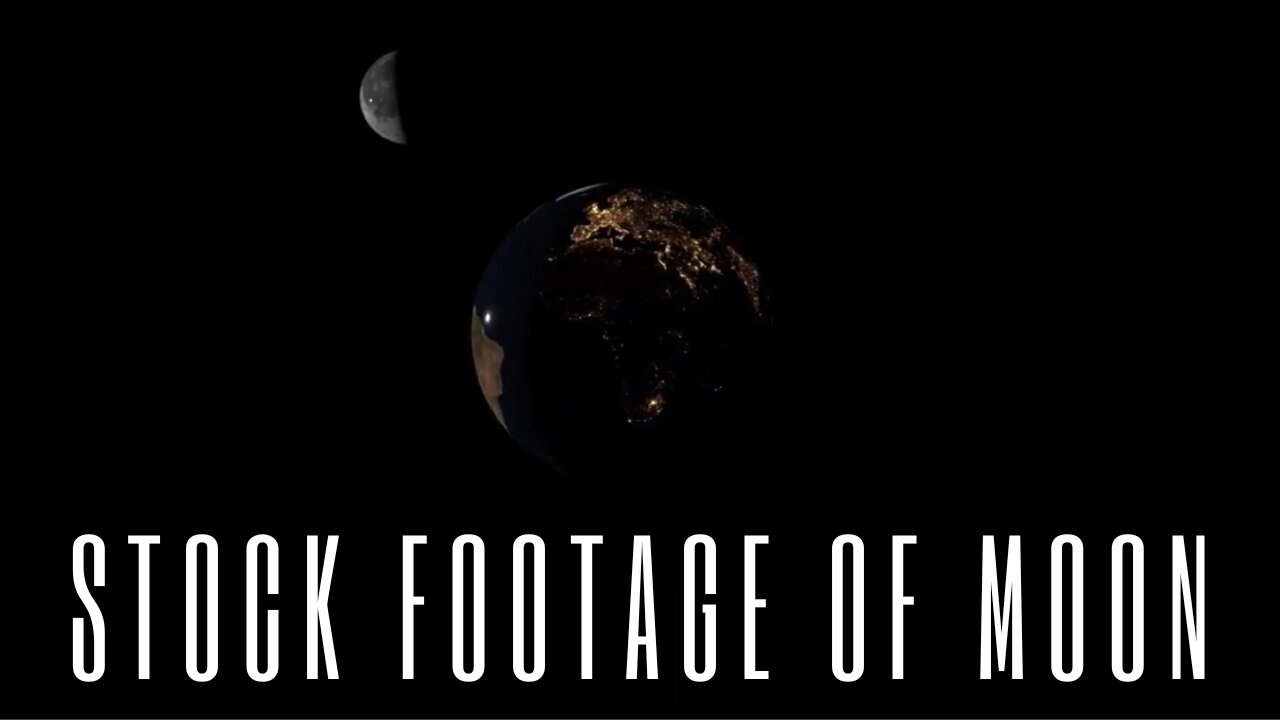Premium Only Content

Stock Footage Of Moon - Moon Eclipse Night
A lunar eclipse occurs when the Earth comes between the Sun and the Moon, causing the Earth's shadow to be cast on the Moon. This can only happen during a full moon when the Sun, Earth, and Moon are aligned in a straight line or close to it. There are three types of lunar eclipses: penumbral, partial, and total.
Penumbral Lunar Eclipse: This occurs when the Moon passes through the Earth's penumbral shadow. The penumbra is the outer part of the Earth's shadow, and during a penumbral lunar eclipse, the Moon may only slightly darken.
Partial Lunar Eclipse: In this case, a part of the Moon enters the Earth's umbral shadow. This results in a portion of the Moon appearing darker than usual.
Total Lunar Eclipse: This happens when the entire Moon passes through the Earth's umbral shadow. During a total lunar eclipse, the Moon can take on a reddish hue. This is often referred to as a "blood moon" due to the reddish color caused by Earth's atmosphere scattering sunlight and allowing only red wavelengths to reach the Moon.
Lunar eclipses are safe to watch with the naked eye, and they occur more frequently than solar eclipses. Unlike solar eclipses, which can only be observed from specific regions, a lunar eclipse can be seen from anywhere on the nighttime side of the Earth where the Moon is visible.
It's important to check the lunar eclipse schedule for your specific location if you're interested in observing one, as the timing and visibility can vary depending on your geographical location.
-
 30:12
30:12
CatfishedOnline
1 day agoOnly Fans Model Drains Man's Money in Romance Scam!
14.6K10 -
 15:01
15:01
Shea Whitney
21 hours ago $1.79 earned20 *Stylish* AMAZON Closet Organization Ideas for 2025!
16.2K6 -
 16:37
16:37
IsaacButterfield
1 day ago $1.92 earnedFatTok Is Ruining Lives
15.4K21 -
 8:42
8:42
VSOGunChannel
17 hours ago $1.54 earnedDOJ Attacks the Gun Industry & ATF Gets a New Deputy Director
14K14 -
 59:47
59:47
Trumpet Daily
21 hours ago $3.32 earnedKilmar Abrego Garcia: Democrat Poster Child and MS-13 Terrorist - Trumpet Daily | Apr. 17, 2025
14.6K2 -
 8:59
8:59
MudandMunitions
18 hours agoThe Savior Equipment Range Bag: Worth the Hype or Overrated?
15.1K -
 3:06:16
3:06:16
Price of Reason
18 hours agoDESPERATE Gavin Newsom SUES Trump! Disney Fantastic Four to FLOP? Asmongold Faces BACKLASH Again!!
146K19 -
 3:48:12
3:48:12
Akademiks
11 hours agoDay 2/30. Drake Challenges UMG and calls them Desperate. Ye Backs Drake. Lil Wayne Dont Fw Superbowl
123K17 -
 8:06:34
8:06:34
MyronGainesX
1 day ago $28.77 earnedKarmelo Anthony Merch, Ashley EXPOSES Elon, Filipino President Punishes Vitaly, Iran War Pause!
94.5K17 -
 2:41:54
2:41:54
TimcastIRL
13 hours agoMASS SHOOTING At Florida State, Anti Trump Rumors ERUPT, MANGIONE EFFECT w/ Maggie Moda| Timcast IRL
252K167